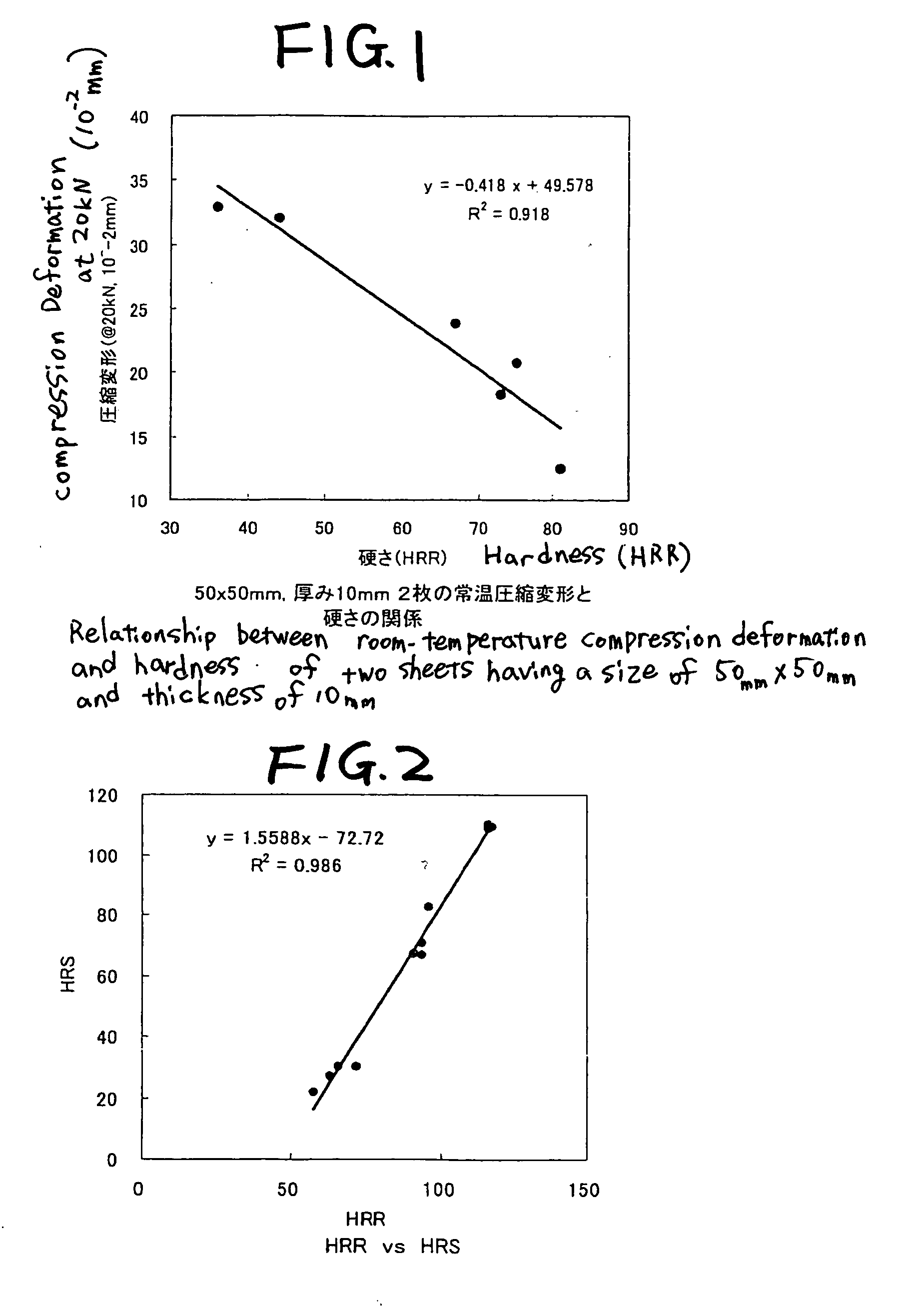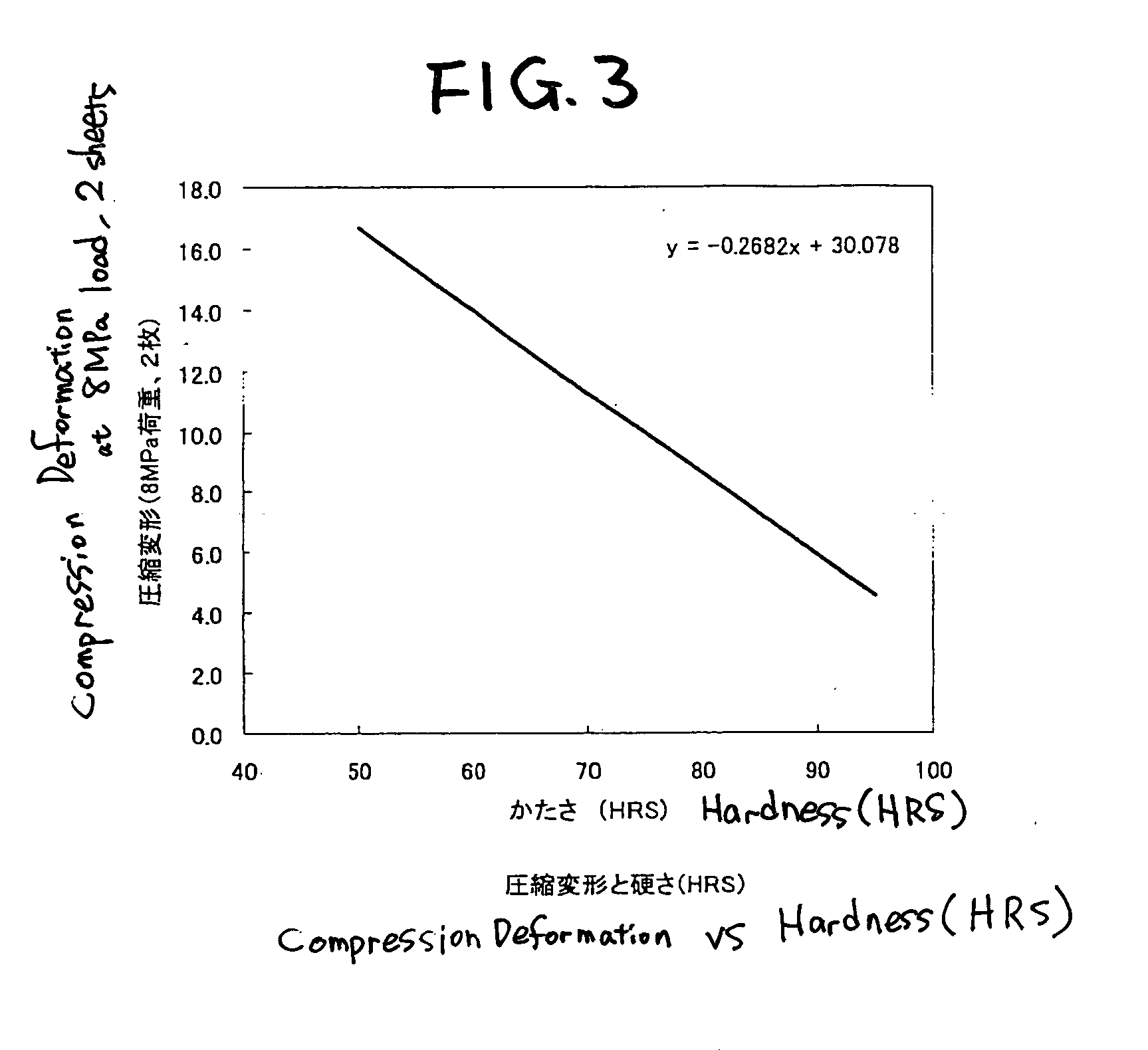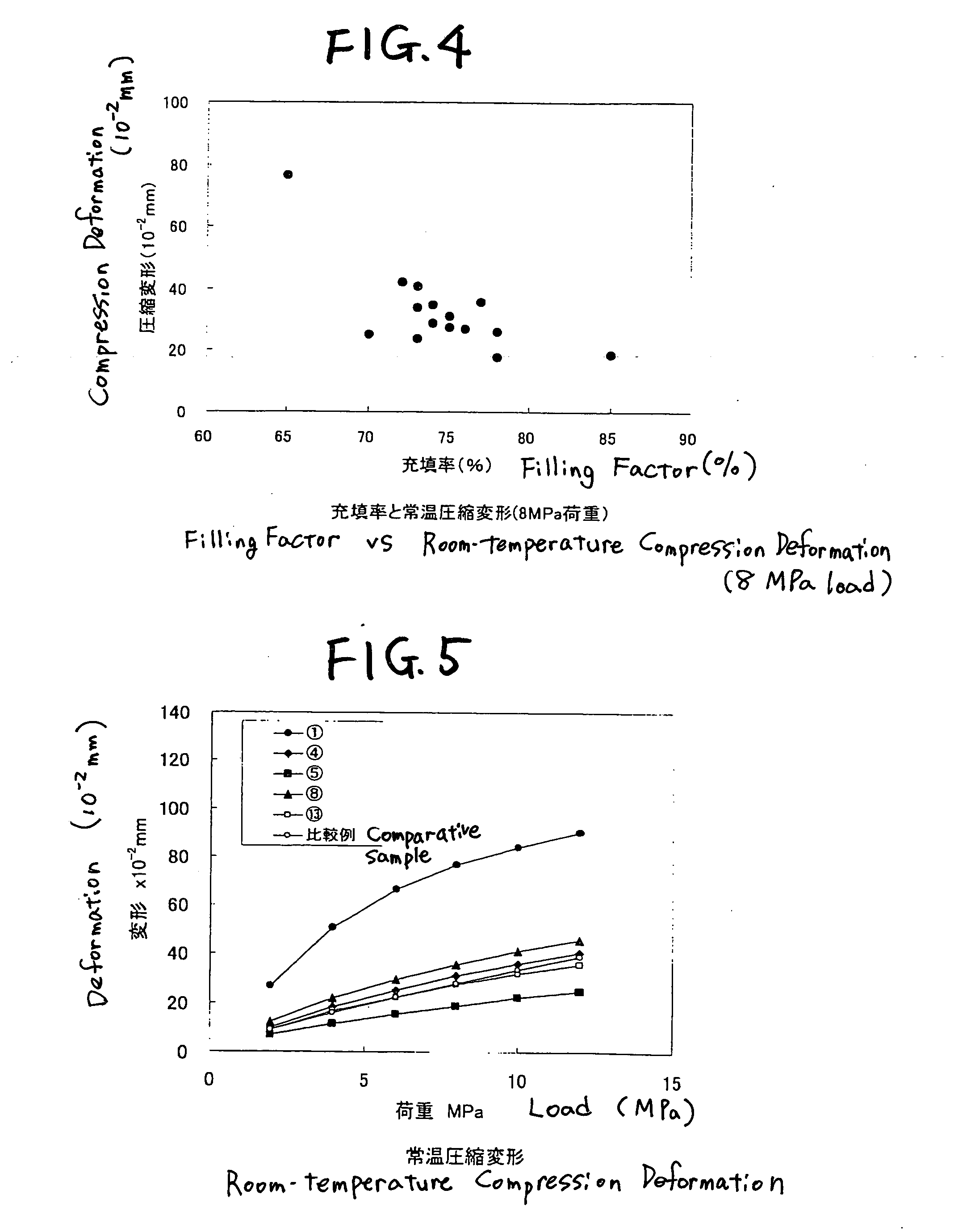Friction material
a technology of friction material and friction factor, which is applied in the field of friction material, can solve the problems of high friction factor, reduced friction factor, and increased degree of compression deformation, and achieves the effects of low friction factor, low speed, and easy influence of moisture and water
- Summary
- Abstract
- Description
- Claims
- Application Information
AI Technical Summary
Benefits of technology
Problems solved by technology
Method used
Image
Examples
examples
[0067] The baking carbonization in this experiment was carried out according to a heating carbonization method of using an ordinary carbonization furnace in which the carbonizing material is heated and carbonized in nitrogen gas, or according to a vacuum heating carbonization method of suing a commercially-available discharge plasma sintering machine.
[Preliminary Experiment]
[0068] Samples of a carbonized composite friction material were produced as follows: A composition to be carbonized was kept in nitrogen gas at a baking temperature of 900° C. for 1 hour, and then a sample of 50 mm×50 mm in size was pressed under a load of from 2.5 kN to 30 kN. In this stage, the degree of compression deformation necessary for the friction material was controlled by varying the filling factor.
[0069] Before the experiment, the range of the uppermost and the lower most filling factor was estimated in a preliminary experiment. Briefly, a filling factor range of from 61% to 88% was divided at regu...
PUM
| Property | Measurement | Unit |
|---|---|---|
| temperature | aaaaa | aaaaa |
| temperature | aaaaa | aaaaa |
| temperature | aaaaa | aaaaa |
Abstract
Description
Claims
Application Information
 Login to View More
Login to View More - R&D
- Intellectual Property
- Life Sciences
- Materials
- Tech Scout
- Unparalleled Data Quality
- Higher Quality Content
- 60% Fewer Hallucinations
Browse by: Latest US Patents, China's latest patents, Technical Efficacy Thesaurus, Application Domain, Technology Topic, Popular Technical Reports.
© 2025 PatSnap. All rights reserved.Legal|Privacy policy|Modern Slavery Act Transparency Statement|Sitemap|About US| Contact US: help@patsnap.com



